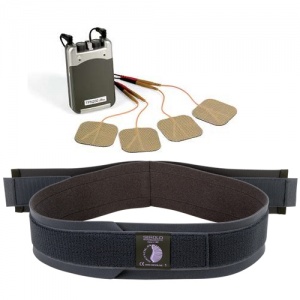Serola Sacroiliac Belt for Back Pain
For many experiencing back pain, the key to relief is alignment of the sacroiliac joint, which links the pelvis to the spine. Worn around the hips, the Serola Sacroiliac Belt for Back Pain stabilises the base of the spine while aligning the pelvis, reducing strain on your muscles and ligaments to alleviate lower back pain and a host of other issues.
What's Included?
How Do I Find the Right Size for Me?
The Serola Support Belt comes in four sizes, which are based on hip circumference. To find the right size, please measure just below the pointy, bony protrusions at the front of your hips. There is a natural indentation where the belt fits.
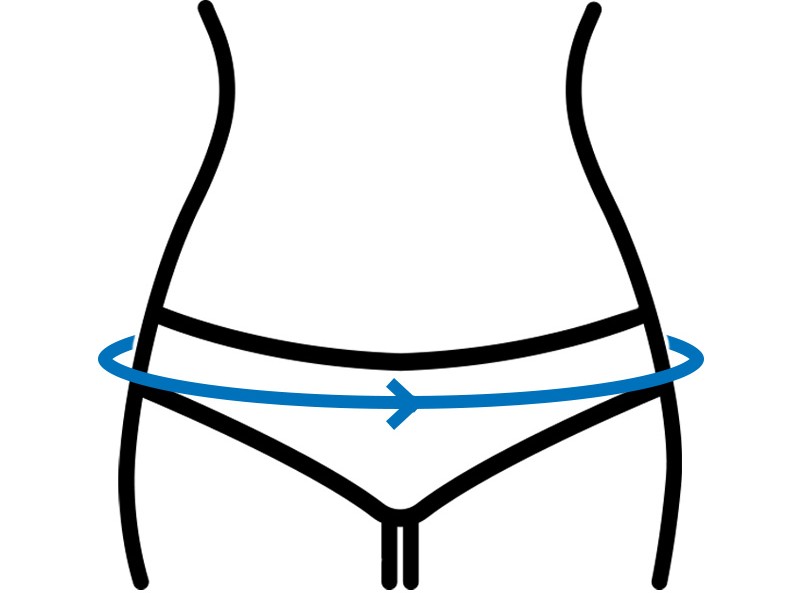
Measure your hips as indicated in the above image
| Sizing of Serola Belt | Hip Circumference (cm) | Hip Circumference (Inches) |
| Small | 76 - 86cm | 30 - 34" |
| Medium | 86 - 102cm | 34 - 40" |
| Large | 102 - 117cm | 40 - 46" |
| Extra Large | 117 - 132cm | 46 - 52" |
What If My Measurements Fall On a Sizing Boundary?
If your measurements fall on a sizing boundary, we highly recommend selecting the lower size for optimum support. This is because the Serola Belt features a generous amount of Velcro that allows you to make adjustments if your belt is slightly tight.
For example, if your hips measure 40", you should select a medium Serola Belt.
What If My Hips Are Too Wide?
If the circumference of your hips exceeds 52", don't fret. The Serola Belt is also available in a 60" circumference variation that is ideal for users with wider than standard hips.
Sizing Tips and Tricks
- If you fall on a sizing boundary, select the lower size
- It is vital that you measure yourself around the hips, as pictured above
- If you are pregnant and fall on/within an inch of a sizing boundary, we recommend selecting a larger size
- Always measure without baggy or heavyweight items of clothing on
How Do I Fit the Serola Belt?
To find out more about fitting the belt, please watch the video below:
Who Can Use This Sacroiliac Belt?
Since the Serola Sacroiliac Belt offers support to the base of the spine, strength is increased throughout the back, hips and legs to greatly reduce the risk of injury. Users of the Serola belt include:
- Maternity units
- Physiotherapy clinics
- Amateur and professional sports teams: Inter Milan, Wigan RFU and Harlequins Rugby
Which Conditions Is the Serola Belt Suitable For?
The Serola Sacroiliac Belt is suitable for a range of conditions affecting your lower back. This includes:
- Lower back pain
- Disc herniation
- Facet syndrome
- Hip degeneration and pain
- Lateral canal stenosis
- Leg length discrepancy
- Leg pain
- Pelvic torsion
- Pubic symphysis dysfunction
- Pregnancy pain
- Sacroiliac joint dysfunction
- Spinal subluxations
- Spondylolisthesis
- Straight back syndrome
- Sciatica
- Scoliosis
How Does the Serola Sacroiliac Belt Work?
The Serola Belt is designed to hold the sacroiliac joint together, so the likelihood of it opening beyond normal between treatments is greatly reduced. During rehabilitation, the Serola Sacroiliac Belt holds the sacrum to the ilia with the proper tension, so that, during exercises, as you bring the ilia backward, it carries the sacrum with it.
The ligaments are not stressed and the joint remains intact, which is critical for proper rehabilitation. Too much or too little tension will create muscular spasm and inhibition.
Can I Wear the Serola Belt Under Clothing?
The Serola Sacroiliac Belt has been engineered to provide maximum support and comfort in a low profile and lightweight design. Therefore, the choice to wear the belt under or over clothing is based strictly on your preferences. The belt is just as effective either way.
What Is the Serola Sacroiliac Support Belt Made From?
The Serola Belt is comprised of two layers: the first is a non-elastic layer that is very similar to neoprene but breathable and hypoallergenic. It's soft, comfortable and non-slip.
The second layer is an elastic layer comprised of elastic pull straps which are fastened second, after the first layer is pulled snug. This layer provides additional compression and resilience, and is tightened according to personal preference and comfort.
Can I Wear the Serola Belt While Sleeping?
Yes, wearing the Serola Sacroiliac Belt during sleep can enhance comfort and significantly improve the quality of your sleep. If you tend to awake feeling sore and tight, the Serola Belt should help.
Can I Wear the Serola Belt During Exercise?
Yes, you should wear the Serola Belt while performing any activity that involves bending, lifting or twisting. Wearing the belt while exercising ensures that the sacroiliac joint is protected, minimising the chances of sustaining an injury.
Can I Wear the Serola Belt During Pregnancy?
During pregnancy, the ligaments, under hormonal influences, become lax and stretch to allow the pelvis to spread for delivery. Accordingly, some back muscles tighten and some belly muscles loosen.
By stabilising the pelvis, the Serola Belt takes the pressure off the sacroiliac and symphysis pubis ligaments, so the muscles can work normally. Therefore, the tight back muscles relax and the loose belly muscles firm up to both help support the baby during pregnancy, and help shrink the hips after delivery.
Which Size Should I Select If I Am Pregnant?
If you are pregnant, we recommend using our sizing guidelines above as standard. If you fall on or within an inch of a sizing boundary and are pregnant, we recommend selecting the larger size belt as your hips will gradually begin to widen.
How Long Can I Wear the Serola Sacroiliac Belt?
The Serola Sacroiliac Belt can be worn 24 hours a day and seven days a week, even while sleeping. There is no limitation to how long the belt can be worn and wearing the belt for long periods of time will not cause any negative effects.
How Do I Wash My Serola Belt?
The Serola Belt should be hand washed in cold water. Rinse well in cold water to remove soap residue from the small open cells in the foam, then line dry.
Features of the Serola Sacroiliac Belt
- Comfortable support for pre/post partum hyper-mobility and symphysis pubis dysfunction (SPD)
- Treats lower back pain, sacroiliac pain and joint instability
- Helps correct joint biomechanics
- Encourages ligamentous remodeling
- Provides pelvic support
- Aids myofascial rehabilitation
- Suitable for occupational, post-traumatic, degenerative or compensatory hyper-mobility/instability
- Immediate support for people with overworked girdle muscles and painful hip joints
- Valuable aid to post-operative rehabilitation, especially for Trendelenberg positives
- Can be worn during and after pregnancy
- Can be worn over or under clothing
- No hard parts or buckles to cut or chafe
- Breathable, cool fabric for day-in day-out comfort
- Supplied with a 12-month guarantee
What Is the Width of the Belt?
The belt is 3" (8cm) in width.
Safety Precautions
Please note: The Serola Belt offers prolonged relief, but is not intended as a cure on its own.
During painful episodes, the Belt should be worn as much as possible during the day and night. If increased pain, irritation, or rash is encountered while wearing the belt, discontinue use and see a doctor. Because constriction of the abdomen may alter blood flow in susceptible people, it is advisable to check your blood pressure with use of this or any other belt.
Delivery - Free UK Mainland Delivery
Delivery is free of charge on all items at Health and Care when delivered to a mainland UK address. Your order is usually dispatched by Royal Mail or better and is normally dispatched the same day when ordered before 2.00pm, Monday to Friday. For orders placed outside of this timeframe, they should be dispatched on the next working day.
The delivery expectation of order sent via Royal Mail is 1 to 3 working days.
Please call our Health and Care customer care team on 020 7720 2266 if you have any questions about the delivery of this item.
Frequently Asked Questions
What Is The Sacroiliac (SI) Joint?
The Sacroiliac Joints are two of the the main supports of the body. They are where body weight transfers from the spine to the legs through the pelvis. They sense large force streams between the legs and upper body.
Should I Wear The Serola Sacroiliac Belt Under Or Over Clothes?
The Serola Sacroiliac Belt has been designed to work just as well over or under clothes, so the choice is entirely up to you.
Can The Serola Sacroiliac Belt Cause Muscle Weakness?
The Serola Sacroiliac Belt is worn lower than larger lumbar belts, which means that it doesn't affect the back muscles. It works like an external ligament, relaxing the muscles and helping them work better rather than taking over the work of the stomach and back muscles.
Can I Wear The Serola Sacroiliac Belt While Sleeping?
Moving about while sleeping can cause undue strain on the sacroiliac joints and can lead to discomfort and even sleeplessness. Wearing the Serola Sacroiliac Belt helps make you more comfortable and can greatly improve your quality of sleep.
Should The Serola Sacroiliac Belt Be Worn During Exercise Or Sports?
Wearing the Serola Sacroiliac Belt while being active helps keep the sacroiliac joints within a normal range of motion, preventing injury and reducing stress on the joints.
Should The Serola Sacroiliac Belt Be Worn During Pregnancy?
The Serola Sacroiliac Belt, when worn during pregnancy, helps stabilise the pelvis and takes pressure off the sacroiliac joints and the symphysis pubis ligaments, enabling the your back and stomach muscles to work normally. This helps the muscles support the baby during pregnancy and even helps shrink the hips after delivery.
More Information About the Serola Sacroiliac Belt for Back Pain
To help you make sure that you receive the product that is best suited to your needs, we have a range of in-depth guides providing further information. Please follow the links below:


.jpg)
.jpg)

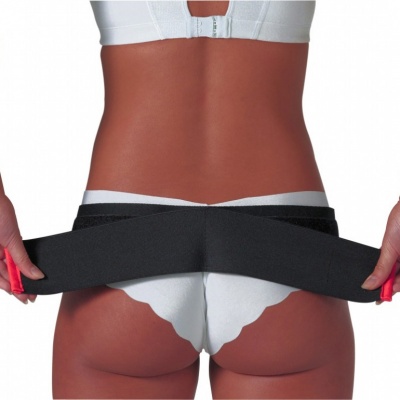
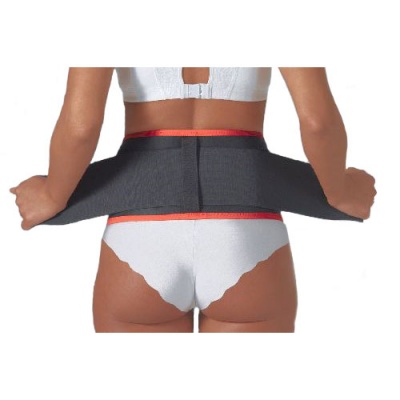
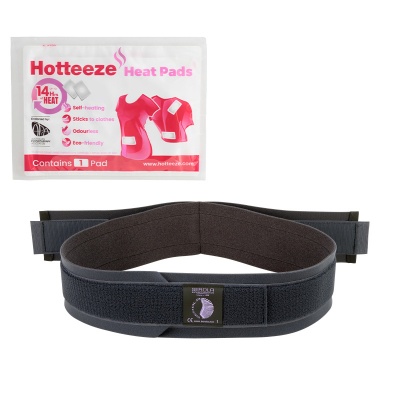

.jpg)
.jpg)
.jpg)
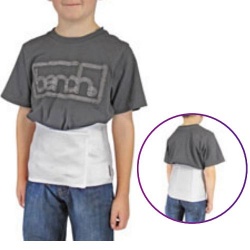
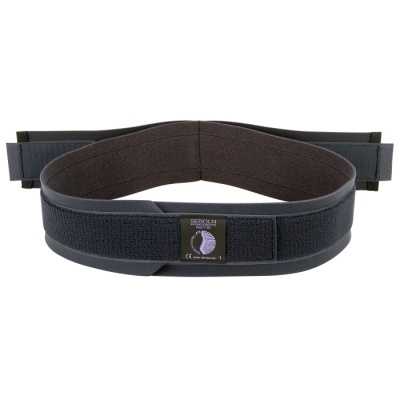
.jpg)
.jpg)
.jpg)
